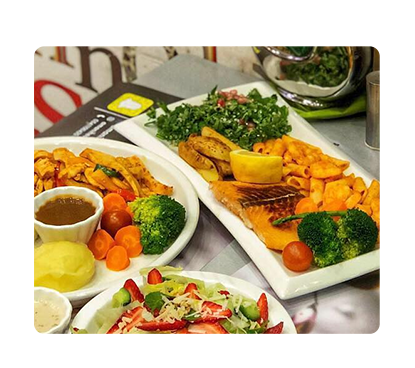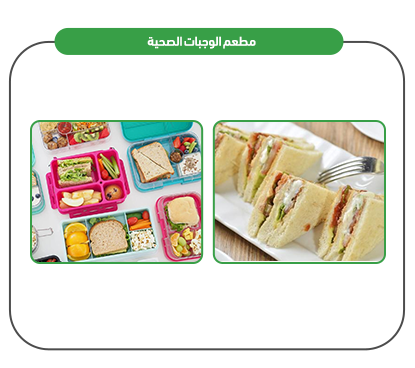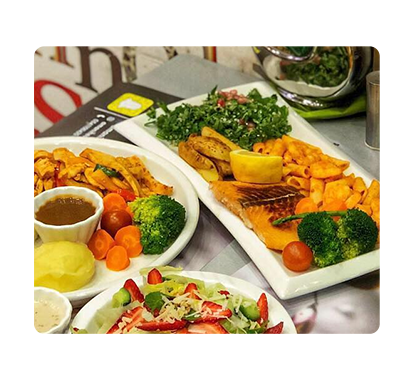Mashroo3k Economic Consulting offers a comprehensive feasibility study for a healthy meals restaurant project in Qatar, ensuring the highest return on investment and the best payback period. This is achieved through in-depth studies of the service sector in Qatar, thorough analysis of current and potential competitors, and the provision of competitive pricing offers.

A healthy meals restaurant provides a variety of nutritious food options that help reduce the spread of obesity and are increasingly in demand in the Qatari market. According to the consultants at Mashroo3k Economic Consulting, dedicating a restaurant to offering healthy meals in Qatar enhances the chances of project success, ensuring the highest return on investment and the best payback period. This is achieved through detailed studies of the Qatari market size, analysis of customer preferences and competitor strategies, and the introduction of innovative ideas to boost the project’s competitive advantages.

Mashroo3k Economic Consulting ensures that a healthy meals restaurant project in Qatar includes all the factors necessary to achieve the highest profitability and the best payback period. This conclusion has been reached by Mashroo3k’s expert consultants based on thorough studies and statistics regarding the size of the Qatari market, as well as an analysis of previous competitors’ strategies and the reasons behind their market exit, in addition to an evaluation of current and potential competitors.


A rich and distinctive flavor
All food and beverages are exceptionally fresh
Free from any off-putting or unnatural odors
Completely free from signs of spoilage or deterioration
Unique and memorable taste in every meal and appetizer
Executive summary
Study project services/products
Market Size Analysis
Risk Assessment
Technical study
Financial study
Organizational and administrative study

The GCC countries comprise just 0.7% of the world’s population; however, they account for 3% of global spending on processed food and beverages—amounting to USD 102 billion out of a global total of USD 3.4 trillion. This indicates a high per capita consumption of food in the region, surpassing the global average. This is not surprising when examined closely: the population of the GCC now exceeds 58 million, and approximately 56.3% of this population falls within the age group of 25 to 54 years—a dynamic and youthful segment that underpins the food industry market more than any other demographic.
Given that Saudi Arabia alone accounts for approximately 59.7% of the total population in the GCC and over 53% of the region’s food and beverage market, Mashroo3k has chosen to present key indicators for this vital market within the Kingdom, based on the latest available data:
By the end of Q2 2021, there were around 916 food product factories in Saudi Arabia, with an additional 249 factories under construction.
The number of beverage factories stood at 209, with 71 more under development.
Food product factories represent 11.1% of the total number of operational factories in the Kingdom (8,258 factories), while beverage factories account for 2.5%.
The food and beverage market in Saudi Arabia was valued at approximately SAR 168.8 billion.
By the end of 2021, food consumption reached SAR 221 billion, marking a 6% growth.
According to global reports, food consumption in Saudi Arabia amounts to USD 70 billion, representing 60% of total food consumption across the Gulf region.
The fast-food market in Saudi Arabia is expected to reach USD 4.5 billion within the next three years.
The organic, healthy, and specialty foods market is estimated at USD 27 billion, while the halal food market alone is valued at USD 6 billion.
Saudi Arabia imports around USD 14.5 billion worth of food and beverage products annually.
In 2020, operational expenditures for food and beverage service activities were estimated at SAR 34,032.10 million, up from SAR 30,069.23 million in 2018.
Operating revenues for food and beverage service activities in 2020 were approximately SAR 61,557.77 million, compared to SAR 54,866.87 million in 2018.
By 2027, operational expenditures for these activities are projected to reach SAR 52,489.34 million, while revenues are expected to rise to SAR 92,084.64 million.
The total expected operational revenue for the food manufacturing sector in Saudi Arabia in 2027 is SAR 128,540.573 million.
Global Food Sector Overview:
According to UNICEF, the global malnutrition index rose to 9.8% in 2021.
Between 702 and 828 million people around the world suffer from hunger.
The global food market generates approximately USD 8.66 trillion in revenue.
Online channels are expected to account for 7.8% of total food market revenues.
Global production of primary crops totals 9.4 billion tons.
Global production of red and white meat reaches 337 million tons.
Fruit production stands at 883 million tons worldwide.
Vegetable production amounts to 1,128 million tons.
Global production of vegetable oils is around 201 million tons.
Dairy production totals 883 million tons globally.
Egg production reaches 83 million tons worldwide.
